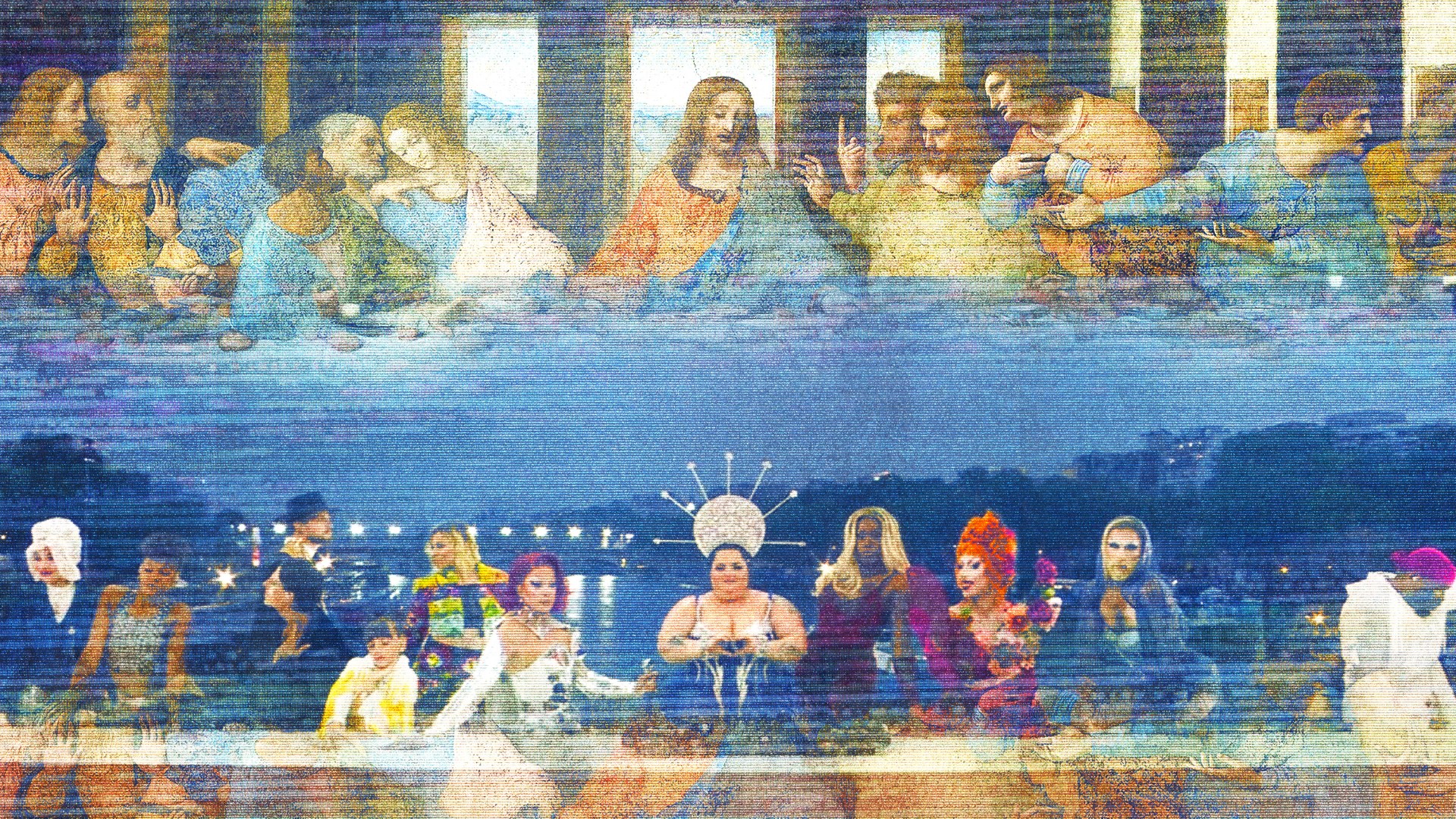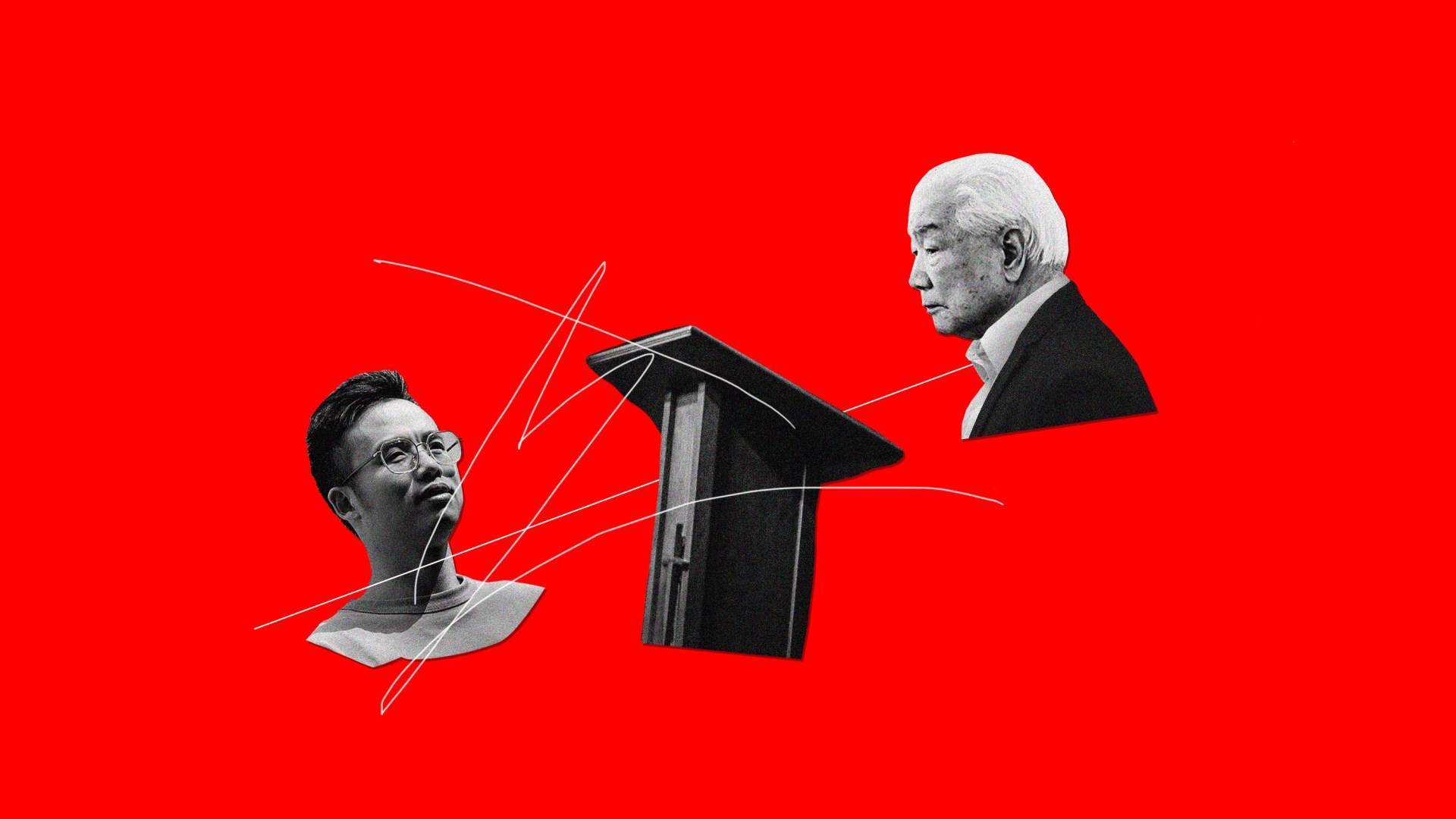Ahead of the 2024 Paris Olympics, Thomas Jolly seemed confident in what he had conjured up for the hours-long opening and closing ceremonies. The artistic director was tight-lipped about the details of performances he’d been planning for two years—but in the days leading up to the Games, he revealed that he expected the spectacle to “be very meaningful for the artists that will perform.”
Now, with the opening ceremony behind him, Jolly is left defending his vision.
One segment has drawn particular controversy: a tableau of LGBTQ activists, drag performers, and lewd dancers that many viewers felt subtly reenacted Leonardo da Vinci’s The Last Supper. “My wish isn’t to be subversive, nor to mock or to shock,” Jolly said in response to the uproar. “Most of all, I wanted to send a message of love, a message of inclusion and not at all to divide.” And yet, the scene has divided, met with scorn by those who experienced it as a mocking parody of Christ and his disciples.
There is a vast disparity between what Jolly claims were his artistic intentions and the way his art has been perceived.
As an artist and art director myself, I am constantly wrestling with what visuals communicate. When I review submissions from our contributing artists, I evaluate not only the technical execution of their images but how our readers might interpret their meaning. In my journal, I write down notes and sketch out possibilities as I search for the right way to convey an idea without words. Should the symbolism be overt? Does this scene merit nuance and ambiguity? How might a use of color or form offer a new perspective?
In all of my creative work, I have intentions for what will be conveyed. And then I look into the future, trying to anticipate how those intentions will be perceived.
All makers are subject to their audiences—to how the novel reader or album listener or museumgoer understands and experiences their work. Art does not exist in isolation; it is always communal. That’s a blessing, not a curse. The moment we tell a story, release a song, or perform a play, it is no longer solely our own. This is the beautiful, wonderful, risky way that all art is a collaboration between the artist and the rest of the world.
Defending the controversial Olympics performance, Jolly explains that his intentions were different from the offense taken by some viewers. In other words, he argued, it’s not his fault. The offended audience failed to interpret his art properly. Jolly contends that the scene was drawn not from Da Vinci but from Le Festin des Dieux (The Feast of the Gods), a Jan van Bijlert painting of a banquet on Mount Olympus. The sun god Apollo faces the viewer; a naked Dionysus eats grapes in the foreground. It’s quite plausible that this work was his true inspiration.

But this defense—“you failed to interpret my art properly”—doesn’t absolve an artist. That kind of response is lazy and pretentious. It comes from an ego that assumes the artist’s perspective is the only proper reading of what has been communicated.
By blaming the viewer’s faulty interpretation, the artist asserts that their intent supersedes what their work has communicated. It denies the objective reality of how their art sits in time and space, its context in history and culture.
As one art historian and professor emeritus said to The New York Times , “The idea of the central figure with a halo and a group of followers on either side—it’s so typical of ‘The Last Supper’ iconography that to read it in any other way might be a little foolhardy.”
Our intentions matter, but they don’t guarantee how others will react. When Paul warns, “Do not let what you regard as good be spoken of as evil,” he doesn’t instruct the Romans to defend themselves (Rom. 14:16, ESV throughout). He tells them to change their actions, to “never to put a stumbling block or hindrance in the way of a brother” (v.13).
Our intentions do not define reality. We are accountable for forming our creations carefully. And we must be humble enough to recognize when we have not succeeded.
Artists are very perceptive people. As an art director, Jolly must have carefully considered the implications of every detail of this performance. To fail to accommodate the perceptions of 2 billion global Christians was careless at the least, and quite possibly intentional disregard.
Sometimes art is meant to be shocking and provocative. Art commands attention and disrupts assumptions for good reasons. But Jolly says that wasn’t his goal. If he was aiming to communicate inclusion, he did so at the exclusion of Christians and religious groups appalled by the performance. In the end, his message only resonated with part of his viewership.
So Christians aren’t wrong to be offended. And also—what we do with our offense matters.
Whether Jolly and the performers risked or embraced the opportunity to be scandalous, it is understandable that Christians would find a scene reminiscent of the Last Supper particularly abrasive. But aside from careless artistic decisions, should the church be surprised by an affront such as this—let alone the obscenity of the rest of the opening ceremony?
In the midst of a discussion on immorality, Paul tells the Corinthian church that they cannot isolate themselves from the sinfulness of secular society. They would have to depart from the world itself to achieve such inoculation (1 Cor. 5:10). Yes, they should strive to protect the integrity of the church body—as we should too. If there is someone within who refuses to turn from their sinfulness, Paul exhorts the Corinthians not to associate with them in order to uphold a moral standard within their community.
But this is not a standard Paul expects of the world outside the church. He reminds the Corinthians that it is God’s role to judge “those outside,” not theirs, including in the context of shocking sexual sin (1 Cor. 5:13). Apparently, the Corinthian church had been distancing themselves, avoiding any interaction with unbelievers in the city of Corinth. Paul tells them that this is not right.
This is the same pattern that prompted the Pharisees to question Jesus when he dined with tax collectors (Matt. 9:10–13). Would Jesus have shared a meal with drag performers, with people who might ridicule the church and its sacred symbols? We should have no doubt that he would have, or that he calls us to do the same.
We also shouldn’t doubt that Jesus calls them to repentance. His response to sin was not to shun or condemn, but to proclaim his forgiveness and invite people to follow him. This is his invitation to all of us.
We shouldn’t expect unbelievers to understand or respect the solemn gravity of a scene like the Last Supper. We shouldn’t be surprised at the obscenity of the performances throughout the opening ceremony. But neither should we be indifferent. Our reaction should be heartache and compassion. Our world is fallen. We’re fallen too, fortunate to have heard and received the redeeming work of Jesus.
And so, like a thoughtful artist wrestling with the implications of their work, we should consider what our actions communicate. What is our intended message? When Christians publicly condemn and boycott the Olympics in response to the opening ceremony, it hardly conveys our belief that Christ died for us while we were yet sinners.
And when Barbara Butch, the DJ in the center of the tableau performance, receives death threats and harassment after the performance, our silence about the sanctity of her life, as one who also was made in the image of God, is telling.
Instead, might we share a meal together? And perhaps take a walk through the halls of a museum discussing what the works on the walls seem to communicate? In that precious shared space, we can express how we lean on a hope that does not put us to shame. No amount of ridicule outweighs the real love that has been poured into our hearts by the grace of God (Rom. 5:5).
Jared Boggess is CT’s print art director.





























































